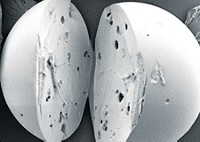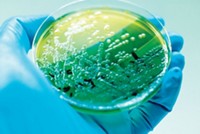Advertisement
Grab your lab coat. Let's get started
Welcome!
Welcome!
Create an account below to get 6 C&EN articles per month, receive newsletters and more - all free.
It seems this is your first time logging in online. Please enter the following information to continue.
As an ACS member you automatically get access to this site. All we need is few more details to create your reading experience.
Not you? Sign in with a different account.
Not you? Sign in with a different account.
ERROR 1
ERROR 1
ERROR 2
ERROR 2
ERROR 2
ERROR 2
ERROR 2
Password and Confirm password must match.
If you have an ACS member number, please enter it here so we can link this account to your membership. (optional)
ERROR 2
ACS values your privacy. By submitting your information, you are gaining access to C&EN and subscribing to our weekly newsletter. We use the information you provide to make your reading experience better, and we will never sell your data to third party members.
Materials
Nanopowders Improve Iron Bioavailability
Novel materials are a promising means of fortifying foods without changing the color or taste
by Celia Henry Arnaud
May 3, 2010
| A version of this story appeared in
Volume 88, Issue 18

Nanostructured iron- and zinc-containing compounds are highly bioavailable in rats but don’t accumulate in their tissues, making the nanomaterials a promising means of fortifying foods, according to a study (Nat. Nanotechnol., DOI: 10.1038/nnano.2010.79). Iron fortification of foods is difficult because easily absorbed water-soluble compounds can change the color or taste of foods, whereas poorly water-soluble compounds have limited bioavailability. Michael B. Zimmermann of the Swiss Federal Institute of Technology, Zurich, and coworkers added nanopowders of poorly soluble phosphates and oxides containing both iron and zinc to rat food, including two oxides doped with either calcium or magnesium. When rats ate the food, the bioavailability of the iron was comparable with that of FeSO4, a highly soluble compound used to fortify human food. The magnesium in particular lightened the dark-brown color of the oxide and improved the bioavailability of the iron. Iron didn’t accumulate in the gastrointestinal tract or other tissues of the rats, and histological analyses revealed no significant structural changes in most tissues, the researchers report. They note that further research is still needed to rule out potential toxicity of the nanomaterials.





Join the conversation
Contact the reporter
Submit a Letter to the Editor for publication
Engage with us on Twitter